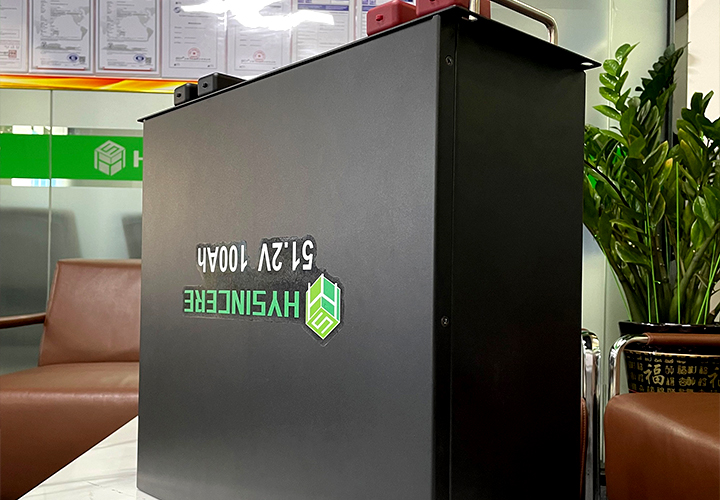source:other news
release time:2023-02-14
Hits:0
Popular:

The composition of lithium -ion batteries is composed of four parts: positive pole, negative electrode, non -hydrolytic, and diaphragm. Among them, positive and negative electrodes include active electrode substances, conductives, adhesives, etc., which are evenly applied to copper foil and aluminum foil collective fluids.
1. Positive active substances are generally lithium manganate or lithium cobaltate, nickel cobalt lithium manganate materials, and electric bicycles are generally used with nickel cobalt lithium manganate or a small amount of lithium lithium manganate, pure lithium manganate and lithium iron phosphate. It gradually fades due to large volume, poor performance or high cost. The conductive fluid uses electrolytic aluminum foil with a thickness of 10--20 microns.
2. A membrane is a high -molecular film with a special forming. The film has a microporous structure that allows lithium ions to pass freely, and electrons cannot pass.
3. The negative active substance is graphite, or the carbon that is similar to graphite structure. The conductive collecting fluid uses an electrolytic copper foil with a thickness of 7-15 microns.
4. The carbonate solvents with lithium hexarofluorophosphate are dissolved in the electrolyte, and the polymer uses a gel -like electrolyte.
5. The battery shell is divided into steel shells, aluminum shells, nickel -plated iron shells), aluminum plastic films, etc., as well as the battery block, which is also the positive and negative end of the battery.
The positive electrode potential of lithium -ion batteries is high, which is often a lithium -embedded metal oxide, or polycotic ionic compounds, such as lithium cobaltate, lithium manganate, ternary, lithium iron phosphate; Such as graphite and non -graphitic carbonized; lithium -ion battery electrolytes are important for non -hydraulic solutions, consisting of organic hybrid solvents and lithium salt. The solvents are mostly organic solvents such as carbonate. Lithium salt is mostly unit -priced polycinomic lithium salt, such as Lithium fluorophytic lithium; lithium -ion battery diaphragm is mostly polyethylene and polyalite microres, which can beolate positive and negative electrodes to prevent electrons from causing short circuits and at the same time to allow the use of ions in the electrolyte.
Read recommendations:
lithium marine batteries wholesaler
32700 3.2V Special Battery Cell Rechargeable Explosion Proof
A Complete Guide to 18650 Flat Top Batteries for Industrial Applications
Lithium battery characteristics.marine battery for trolling motor sales

Last article:What is a portable UPS energy storage power supply?
Next article:Lithium ion battery work principle
related suggestion
lithium trolling motor battery price
2023-04-07lithium ion golf cart batteries Vendor
2023-03-20lithium ion golf cart batteries wholesale
2023-03-22lithium golf cart batteries Vendor
2023-03-22solar energy storage direct sales
2023-03-20deep cell marine battery wholesaler
2023-03-20portable solar generator
2023-05-08solar battery storage system
2023-05-08lithium battery 12v 100ah
2023-05-08best marine battery
2023-05-08deep cell marine battery
2023-05-08solar batteries for home
2023-05-08Lithium Polymer Battery Pack for Smart Home Device
2023-02-14LiFePo4 Battery Pack 12V 200Ah for Ship Boat
2023-02-14Golf Cart 51.2V 150Ah LiFePo4 Battery Pack
2022-09-293.7V NCM 50Ah Semi Solid State Pouch Battery
2025-08-15Lithium Replacing Lead-Acid LiFePo4 Battery Pack 12V 200Ah
2022-09-19Advantages of Ni-MH battery
2023-02-21Do Solar Power Generators Make Clean Energy?
2022-09-08Understanding 18650 Rechargeable Battery 3.7V: Key Features, Applications, and Selection Tips for Industrial Use
2025-08-08What are the main characteristics of lithium-ion batteries?lithium ion golf cart batteries
2023-06-21Optimizing Power Solutions: 10 kVA UPS Battery and 10 kW Solar Systems with Battery Backup
2025-03-14How to choose FPV battery charger?deep cycle marine battery Manufacturing
2023-04-25What is the performance of customized lithium batteries used at different temperatures?lithium batteries for boats
2023-08-17Lithium battery discharge principle.portable power station 1000w
2023-05-26Is the 48V lithium-ion battery charger universal? How long is the life span?
2022-11-10Lead-carbon batteries have the following characteristics
2022-11-01